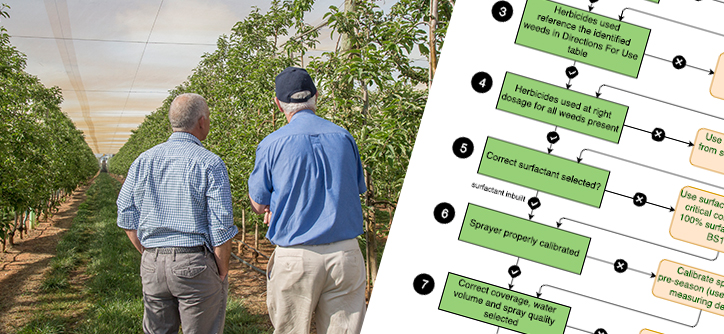Ever used robust rates of a non-selective post emergent herbicide such as Roundup or other glyphosate formulations and not had a good kill and wondered why?
The targeted weeds looked green enough at the time of spraying and you noted 5 mm of rainfall the day before spraying to help freshen the weeds up. Yet the result was poorer than expected.
Turns out this is not an uncommon problem, for after a period of hot dry conditions weeds seek to conserve moisture loss by thickening the waxy cuticle on their leaf surface, thereby limiting herbicide uptake.
So you’re examining the reasons why you had such a poor glyphosate kill. Your mind quickly assumes it must be resistance or tolerance by the weed to the herbicide used, given all the talk on the subject and the fact that you are a savvy spray applicator with state of the art equipment.
In our article Tips for Diversity and Integration in Weed Control , published last January, we detailed herbicide resistance testing. By way of recap a “Quick Test” from Plant Consulting costs $150 for one MOA; $495 for 5 MOAs and their website details the correct sampling process, remembering the test is for grasses and some broadleaf weeds.
So Quicktest in hand, you’re lucky: resistance is not yet a problem at your location, so cross that factor for poor weed control off your list, at least for those species tested.
So if not resistance, then just how great an impact can moisture stress have on the efficacy of herbicides on target weeds?
Dr Dave Minkey found that over the range of conditions encountered in his research, the glyphosate 450 rate for 90% control ranged from 150mL/ha to 3L/ha. This represents a 20-fold difference in rate to kill the same sized weed, as a result of seasonal conditions and the interactions between temperature and moisture stress. So, in cool and wet weather with high RH at spraying, the lethal dose of glyphosate to kill wheat could be as low as 150mL/ha. By contrast if ryegrass is sprayed in hot and dry weather, the rate could be 3L/ha or higher.
In the above referenced article from AHRI it states that “when plants are moisture-stressed they:
1.Develop a thick, waxy cuticle on their leaves that is a barrier to herbicide uptake. After a rain event, the weeds freshen up as they start to grow again but the waxy cuticle remains, so even though rainfall helps, it doesn’t completely undo the harm that has been done and these weeds will remain relatively hard to kill. If conditions improve and new leaves emerge with a normal, thin cuticle, the weeds can become more susceptible to an herbicide.
2.Translocation is slow during moisture stress so translocated herbicides struggle to reach their site of action.”
With an understanding of the critical importance of healthy weeds (free from moisture stress) for herbicide applications to be effective, it’s a good policy to work through a flow chart for many of the key factors that will help contribute towards the aspirational goal of achieving close to 100% weed control.
Download the Chemcert 10 point guide flowchart below and hopefully nudge the battle against weeds more in your favour.





